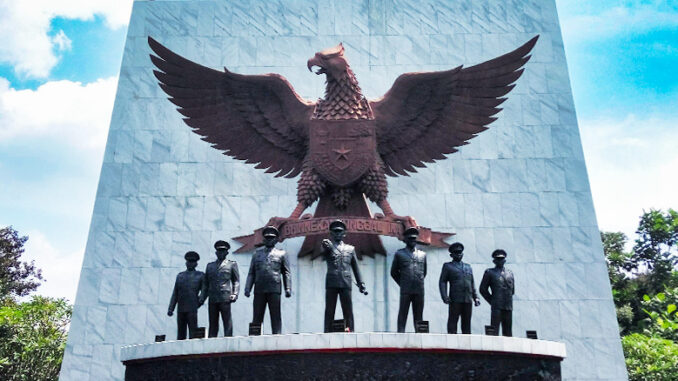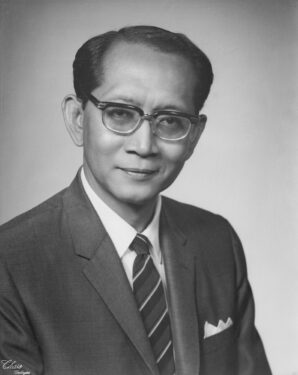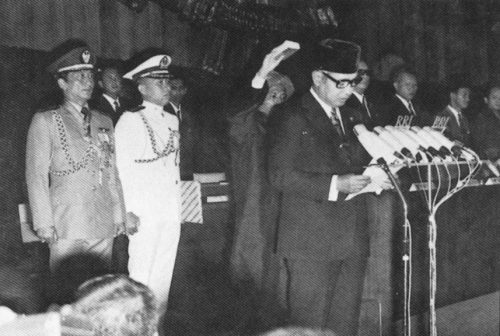
When the Hungarian Marxist philosopher György Lukács published The Destruction of Reason (1952), his polemical broadside against 20th-century continental philosophy, he specifically targeted figures like Kierkegaard, Heidegger, and Jaspers—along with their French counterparts such as Sartre and Camus—as the thinkers of what he termed “parasitical subjectivism.” He traced its origins to the crisis of European bourgeois thought in the late 19th century, as the failures of liberal democracy and the rise of imperialism had shattered the faith in collective reason. A continuation of the tradition of Marxist critiques of ideology, Lukács framed existentialism as a symptom of ideological decay, one that fetishized material contradictions by leading intellectuals into solipsism, metaphysical despair, complicity with reactionary politics (as evidenced by the case of Heidegger), and finally a diversion from the imperatives of class struggle.
Lukács’s diagnosis of existentialism as a retreat into abstract individualism and moral voluntarism is particularly pertinent to the Indonesian case: it offers a lens for understanding how a section of Indonesian socialist intellectuals sought to move beyond Marxist determinism, only to find themselves complicit in the ideological rationalizations of technocratic authoritarianism under the New Order.
The ideological clash between existentialism and Marxism reached a pivotal moment in Indonesia in the first decades of independence (1945-1960s). This confrontation unfolded against the backdrop of the global Cultural Cold War, a context increasingly documented in recent scholarship (Herlambang 2013). Central to this struggle were intellectuals affiliated with the CIA-backed Congress for Cultural Freedom (CCF)—figures like Soedjatmoko, Mochtar Lubis, and Goenawan Mohamad—who aimed to reshape Indonesia’s cultural landscape along the lines of liberal internationalism after the anti-communist killings of 1965–1966. Within this framework, existentialism was strategically aligned with the CCF’s agenda of liberal anticommunism, reflecting a transatlantic consensus that positioned “universal” humanist values against Marxist materialism (Saunders 1999: 78).

This intellectual fashion was en vogue during the 1950s among Indonesian literary circles, particularly within sections of the Generation of 1945 (Angkatan’45) born out of the revolutionary ashes. At the heart of the embrace of the philosophy was a distinct pessimism. Writers like Chairil Anwar, Sitor Situmorang, and Iwan Simatupang of the Gelanggang group dwelled on themes of absurdity and what literary critic Keith Foulcher (2015: 163) termed the “meaninglessness of existence”—a world-weary tone reflecting post-revolutionary disillusionment. This trend of doom and gloom drew sharp critiques from the left. Lekra intellectual Boejoeng Saleh (1954) derided the trend as “Camusianisme,” dismissing it as little more than bourgeois despair masquerading as philosophical pessimism. The Gelanggang writers shared intellectual affinities with key members of the Indonesian Socialist Party (PSI), who subsequently became their patrons.
The PSI was more than just a refuge for the Gelanggang group; for much of the 1950s, they served as the political home for many of its key members through media outlets such as Siasat and Konfrontasi, and its adjacent salon such as Studieclub Konfrontasi. The periodical Siasat, specifically, was founded by two of Sjahrir’s protégés during the Japanese occupation (1942-1945) and future PSI members: Soedjatmoko and Rosihan Anwar. Emerging from a 1948 split within the Socialist Party (PS), the PSI, chaired by Indonesia’s first premier Sutan Sjahrir, carved out a democratic socialist identity distinct from the revolutionary socialism of the Indonesian Communist Party (PKI). The PKI, founded in 1920, had been driven underground after its failed 1926 rebellion, only to reemerge during the revolution and solidify its position through its own split from the PS. The PSI, by contrast, became a convergence point for a wide, and at times discordant, range of intellectual ideas: from non-Soviet Marxism (spanning Eduard Bernstein to Yugoslavian market socialism) and British Fabianism to American modernization theory, French and German lebensphilosophie, and even the aristocratic liberalism of thinkers like Jacob Burckhardt and Ortega y Gasset.

What is less known is that the intellectuals who would later form the core of the PSI were arguably the first to introduce existentialist thought to Indonesia during the revolution. As part of a propaganda effort, the Republican government, under the premiership of Sjahrir, published a Dutch-language periodical titled Het Inzicht (Insight). Shortly after its launch, Soedjatmoko and Soedarpo Sastrosatomo took over as editors. Between February and March 1947, the journal serialized three Dutch-language articles on existentialism, marking its first systematic introduction to the Indonesian public. A few months later, the final edition of Pembangunan—a weekly edited by Sutan Takdir Alisjahbana, also a PSI loyalist—published an article entitled “Existentialism and Surrealism” in Indonesian language. The articles in both outlets focused on general introduction to the philosophy, mapping its central thinkers, and its implication in the study of humanities as well as in art and literature.[1] This was years before formal academic treatments like Drijarkara’s Percikan Filsafat (Philosophical Reflections, 1962), printed by Soedjatmoko’s own publishing house PT Pembangunan, or Fuad Hassan’s comprehensive survey Berkenalan dengan Eksistensialisme (Introduction to Existentialism, 1971).
Importantly, unlike the pessimistic tone adopted by the Gelanggang group, these PSI intellectuals offered a more coherent, pragmatic, and optimistic vision of existentialism, deliberately diverging from its often gloomy European origins. In fact, it’s easy to see how existentialism found its captive mind among PSI intellectuals. Its emphasis on the authenticity and immediacy of the “here and now” encouraged them to focus on concrete, present challenges rather than grand yet distant utopian visions, especially when virtually all political parties in Indonesia paid lip service to socialism (including the PSI itself). The philosophy’s assertion that individuals are free to make choices, even in dire circumstances, underscored the importance of agency and responsibility, without being constrained by any sense of the teleological shaped by mass ideologies such as romantic nationalism and Marxism—which the party tried to jettison from its foundation in the PSI 1952 congress.
The most substantial engagement with existentialist thinkers may come from PSI intellectual Soedjatmoko, whose profound immersion in the philosophy shaped his perspective on Indonesia’s postcolonial challenges. During the revolution, journalist Rosihan Anwar (1999: 210-12) recalled how Soedjatmoko passionately dissected Sartre’s Being and Nothingness (1943), likely acquired through foreign contacts under Japanese occupation. Central to his thinking were concepts like Sartre’s “facticity” (facticité), Heidegger’s “thrownness” (Geworfenheit), and Jaspers’ “limit-situation” (Grenzsituation)—ideas he never explicitly cited but which unmistakably underpinned his analysis. For Soedjatmoko, the 1945 Revolution was the defining “limit-situation” of modern Indonesia, a historical rupture that birthed the nation’s cultural, political, and economic realities. He framed Indonesia as a society “thrown” into the crucible of revolution and post-revolutionary scarcity, transforming these existential conditions into a pragmatic, developmentalist blueprint for nation-building. Soedjatmoko, however, rejected the deep pessimism that often underscored existentialist writings, reframing the philosophy’s “retreat to the self” as a call to harmonize personal commitment with the pursuit of social progress.[2]

By the 1950s, Indonesia’s cultural landscape, shaped by internal shifts and the Cold War, became embroiled in a contest over the role of culture in post-revolutionary society. The PSI and Gelanggang artists, aligned with liberal anti-communist currents, saw culture as either a supplement to capitalist modernization or as an apolitical pursuit, while Lekra embraced art as a vehicle for mass mobilization, echoing Soviet-aligned socialist realism. Presented at a 1957 history seminar at Gadjah Mada University—a time marked by regional uprisings and Sukarno’s proposal for a National Council widely seen as heralding the era of Guided Democracy—Soedjatmoko’s (1958) position paper “Merintis Hari Depan” (Building the Future) offered a vision for historical inquiry that transcended both romantic nationalism and Marxist historical materialism, citing liberal Jacob Burckhardt’s Reflection of History for the former and ex-communist Wittfogel’s Oriental Despotism for the latter as a counterpoint. Drawing on Jaspers’s On the Origin and Goal of History (1949), he highlighted the concept of “Totalwurf der Geschichte”—a comprehensive framework for understanding world history aimed by Jaspers as a critique of instrumentalization of history for political ends—a perspective that would underpin his critique of deterministic narratives and inform his call for a more open-ended approach to Indonesia’s historiography.
One might compare Soedjatmoko’s critiques of ‘deterministic’ historiography to Karl Popper’s attacks on ‘historicism’ in The Poverty of Historicism (1944) and The Open Society and Its Enemies (1945) which had profoundly shaped the contour of Cold War liberalism through the rejection of ideologically-driven utopian visions that claimed to predict or dictate historical outcomes. Both thinkers sought to dismantle the notion of grand historical destiny, which Popper argued inevitably led to totalitarianism, whether of the left or right. Yet, for all its anti-ideological pretensions, this rhetoric of pragmatism—cloaked in appeals to authenticity and responsibility—ultimately became its own form of ideology.
By 1968, two years after the downfall of Sukarno and the mass-murder of the Indonesian left, Soedjatmoko (1968: 1-5), then Indonesia’s newly appointed ambassador to the United States, delivered a speech to the Greater San Francisco Chamber of Commerce that encapsulated this shift. Praising Suharto’s New Order regime for its “commitment to constitutional government, realism in its outlook on the world, and rationality and pragmatism in economic policies,” he drew a striking analogy between the regime’s economic liberalization, the abolition of state subsidies, and the embrace of free-market mechanisms and the “revolutionary élan of 1945.” The anti-ideological pragmatism championed by Soedjatmoko and the PSI during the 1950s unwittingly evolved into the dominant ideology of the New Order, repurposed to justify authoritarian developmentalism with the rhetoric of “de-ideologization.” What began as a philosophical stance against grand narratives of history became a tool for consolidating power, revealing the paradoxes of a discourse that sought to transcend ideology while increasingly becoming one.

Lukács’s denunciation of existentialism as “parasitical subjectivism”—a retreat from collective struggle into bourgeois individualism—finds an ironic counterpoint in the Indonesian case. Figures like Soedjatmoko and others repurposed its focus on agency and authenticity not as a surrender to despair but as a pragmatic ethos for confronting post-revolutionary hardship. Under Suharto, this legacy mutated: the PSI’s existentialist-inspired pragmatism, stripped of its humanist core, became a tool for authoritarian developmentalism, prioritizing technocracy over democratic participation. Yet Lukács’s critique rings tragically prescient: the PSI’s project, despite its emancipatory aspirations, ultimately hollowed out political imagination, enabling an authoritarian regime to weaponize “apolitical” pragmatism while suppressing dissent. In this light, existentialism’s malleability—particularly due to its flight from materialism—exposes its vulnerability to co-optation, highlighting how even anti-ideological gestures in the Global South’s postcolonial trajectory can entrench power structures they sought to transcend.
Windu Jusuf
References –
Anwar, R. 1999. Quartet: Pertemuan dengan empat sahabatku, Jakarta: Yayasan Soedjatmoko.
Foulcher, K. (Ed.). 2015. Indonesian Notebook: A Sourcebook on Richard Wright and the Bandung Conference. New York: Duke University Press.
Herlambang, W. 2013. Kekerasan budaya pasca-1965. Jakarta: Marjin Kiri.
Lukács, G. 1980 [1962]. The Destruction of Reason. London: Merlin Press, pp. 489–522.
Saleh, B. 2004 [1954]. Kewajiban yang tak boleh ditunda. In M. Nursam (Ed.), Krisis daya cipta Indonesia (p. 32). Jakarta: Ombak. (Originally published in Siasat, 29 August 1954).
Saunders, F. S. 1999. The cultural cold war: The CIA and the world of arts and letters. New York: The New Press.
Soedjatmoko. 1958. Merintis hari depan. In Seminar Sedjarah: Yogyakarta. Jakarta.
Soedjatmoko. 1968. Indonesia and the Security of Southeast Asia. San Francisco: Consulate Republic of Indonesia.
Notes –
[1] D. v. D. “Notities uit Nederland: Existentialisme I” in Het Inzicht, 26 February 1947, pp. 11-12; “Notities uit Nederland: Het Existentialisme II,” Het Inzicht, 5 March 1947, pp. 11-12; “Notities uit Nederland: Het Existentialisme III, “ Het Inzicht, 12 March 1947, pp. 9-10 ; Existentialisme dan Surrealisme dalam Pembangunan, 15 July 1947, 172-173. The Inzicht articles were in Dutch and published as a three-part letter under anonymous byline of “D. v. D.”
[2] Siasat, 17 May 1953, p. 20.
